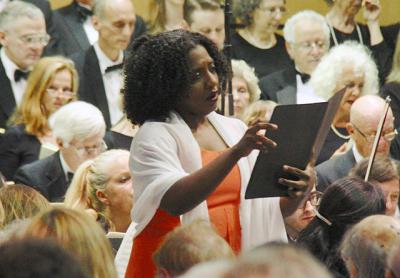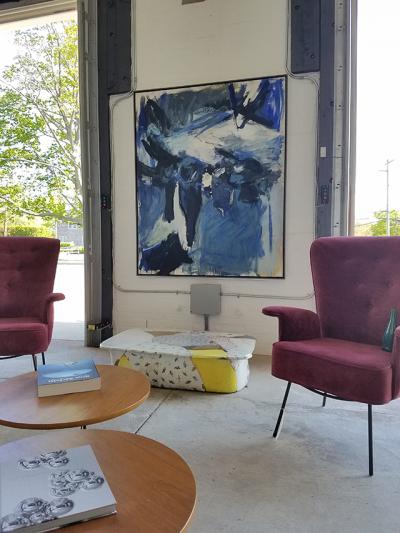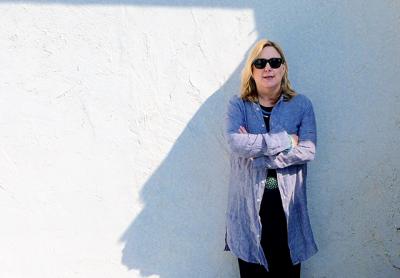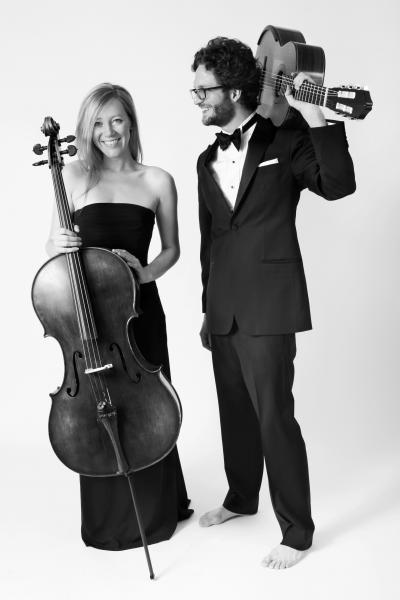Brahms's 'Requiem': An Old Master in East Hampton
Brahms's 'Requiem': An Old Master in East Hampton

About suffering they were never wrong,
The Old Masters: how well they understood
Its human position;
how it takes place
While someone is eating or opening a window. . . .
W.H. Auden, “Musee des Beaux Arts”
By any measure Johannes Brahms was an “Old Master” and it was with his German Requiem, that musical salve for human suffering in the face of death that the Choral Society of the Hamptons, joined by the Greenwich Village Chamber Singers and the South Fork Chamber Orchestra, closed its 2016-2017 concert season on Saturday in the Parish Hall of Most Holy Trinity Catholic Church in East Hampton.
Although an old master he surely was, with this glorious music Brahms parts ways not only with Auden’s description of obliviousness to suffering but with centuries of musical practice as well. Instead of solemn pleas in Latin for the eternal rest of departed souls, Brahms offered comfort, in their own language, for those left behind to grieve. Brahms wrote not for the departed soul of Icarus but for the consolation of Daedalus, his grief-stricken father. Which is why on Sept. 20, 2001, when the New York Philharmonic was to have opened its season with a gala and festive concert, its program was changed to “Ein Deutsches Requiem,” and the audience, still reeling from the attack on the World Trade Center, was asked not to applaud at the work’s conclusion, but to remain silent. This was music for the consolation of all present, performers and audience alike.
Before Saturday evening’s concert, as additional chairs were brought in to accommodate the exceptionally large and growing audience, the orchestra began to warm up and there was a palpable sense of excitement in the room. This would not be a performance of the Brahms Requiem for chorus, piano, and a few strings in a watered-down arrangement of Brahms’s brilliant orchestration; here were 38 professional instrumentalists including brass, tympani, and harp and from the opening bars of the introduction, with the gently throbbing low Fs in the double basses, it was clear that the excitement and anticipation of the now standing-room-only audience was warranted. With the achingly tender entrance of the chorus singing “Selig sind, die da Leid tragen” (Blessed are they that have sorrow) it became clear that the audience was in for a special evening.
One might have wondered how Mark Mangini, the music director of both choruses who conducted, would manage to blend the sound of choruses made up of singers of apparently different ages and backgrounds. It was rarely an issue and never one that provided significant distraction. (What did provide distraction, especially in quieter sections, was a noisy air conditioning unit that continued throughout the concert.)
The German vowels were well blended and with a few minor exceptions, final consonants were clearly articulated and uniformly placed. Where the voices of the Greenwich group were especially welcome was in the tenor section and in the higher passages sung by the soprano section. For the sopranos, this was most evident in the As and the B-flat of the second movement. Also impressive in this occasionally stark and dirge-like second movement was the convincing forte at “Denn alles Fleisch es ist wie Gras” (For all flesh is like grass) and the even more impressive gradual decrescendo that followed. The ability to sing an even and gradual decrescendo is one of the marks of a well-trained choir.
The third movement featured the baritone Jason Eck, who had sung with the Choral Society once before, and it is not surprising that he was invited to join them again. Although he possesses a fine voice with many well-chosen colors in his palette, it is his willingness to place that voice so convincingly in the service of the music and text that was particularly memorable. He clearly understood and communicated the meaning of every word he sang. Perhaps because of its role as accompaniment to the soloist, the chorus was not as sharp in this movement, with several unprepared high notes that had been sung earlier with no problem now ringing untrue.
The familiar fourth movement, “How Lovely is Thy Dwelling Place,” was sung with beautifully shaped phrases. Mr. Mangini succeeded not only in achieving the long shape of each line but had clearly given attention to the smaller shapes within each larger phrase. This is sophisticated music-making. Some intonation issues in the winds were noticeable but not fatal.
Ileana Santamaria was the soprano soloist for the fifth movement. She too put her voice at the service of the music and text, and her lovely, angelic voice floated effortlessly on the quiet, rising thermals of the choir’s subdued imprecations below.
There was nothing subdued about the choir’s singing in the sixth movement. They were especially thrilling in the fugal section of this movement, successfully managing the eighth-note triplets in quick tempo, an impressive bit of vocal agility. The entire ensemble, with the conductor’s clear direction, managed the tricky sections where singers and players are at rhythmic odds with one another. The final movement, with its unmistakable references to material from the first, brought the evening’s music to an enormously satisfying conclusion, and the audience quickly rose to its feet in a show of appreciation for this most impressive performance.
The Brahms Requiem concluded the Choral Society’s 2016-2017 concert season. As noted in an earlier review, this season was satisfying not only for the quality of its music-making but for the thoughtfulness and creativity of its programming. It can be tempting to fill a summer concert with lighter fare, and the Brahms Requiem is decidedly not lighter fare. But it was clear from the expressions on the faces of a number of the singers and from the response of the audience, both in choosing to attend in large numbers and in the ovation they gave at the concert’s conclusion, that the need for consolation from the pen of an old master provided something important and perhaps much needed. And for that, a grateful concert-going community gave an enthusiastic and memorable thank-you.





